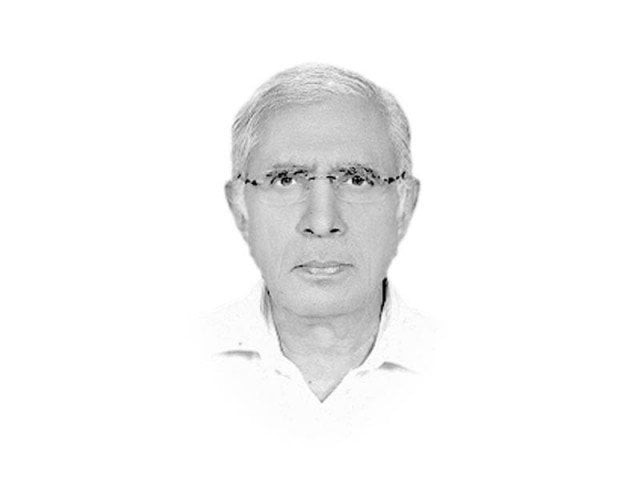Breaking out of dole dependence
One only hopes that Pakistan finally succeeds in preparing an economic policy blueprint

The writer served as executive editor of The Express Tribune from 2009 to 2014
The East Asian countries had readily and without question offered to become sweat shops for the US and European manufacturers. Using imported capital and technology from the US and Europe and putting to work locally-generated subsidised power and cheap labour, these poor East Asian countries exported to captive rich markets, emerging into global export power houses by early 1980s, as a result.
China on the other hand had remained confined within its bamboo curtain for more than 40 years following a rigid policy of looking after its people from cradle to grave providing them with only the barest minimum essentials by way of food, shelter and clothing while at the same time it was manually creating a gigantic production power house generating assets worth trillions and savings worth billions.
India followed a highly-restrictive import regime along with adhering to very high savings rates for almost 45 years while its economy expanded haltingly at a snail’s pace producing for a market of a billion-plus on the back of ever-widening budgetary deficits in its growing states.
None of these three regions had reached where they are today with the help of the institutions that created the so-called Washington Consensus. The concept and name of the Washington Consensus summarises commonly shared themes that formulated the policy advice by Washington-based institutions, such as the International Monetary Fund, the World Bank, and the US Treasury Department, which were believed to be necessary for the recovery of developing countries from their chronic economic and financial crises while guaranteeing at the same time that the markets of these countries would remain open for imports from rich countries.
Macroeconomic stability is a highly-desirable goal but by the time a country succeeds in achieving this goal, it invariably ends up with high debt, chronic resource constraints, high current account deficit, unemployment rate shooting through the ceiling and inflation spiraling out of control.
Thomas Piketty (author of the best-selling book Capital in the Twenty-First Century) states that when the four rich countries of the world – Sweden, France, Britain and the US – collected less than 10 per cent from the national income by way of taxes, they could afford to fulfill only their central functions (police, courts, army, foreign affairs, general administration, etc) but not much more. This was the situation in these four countries during the 19th century up to the First World War.
Between 1920 and 1980, the share of national income that the wealthy countries chose to devote to social spending increased considerably as in just half a century, the share of taxes in national income increased by a factor of at least three to four and in Nordic countries by more than five.
The growing tax collection enabled the governments of these rich countries to take on ever-broader social functions which now consume between a quarter and a third of national income of which one half goes to health and education, the other to replacement incomes and transfer payments. All told, the total social spending, broadly speaking, amounts to 25-35 per cent of national income.
“In other words, the growth of the fiscal state over the last century basically reflects the constitution of a social state.” And that perhaps is the way for developing countries like Pakistan as well to reach the goal of managing affordable education, affordable health cover, affordable transport, affordable housing and affordable security.
One only hopes that Pakistan finally succeeds in preparing an economic policy blueprint to make the most of indigenous comparative advantages for enabling the national economy to come out of its dependence on dole while at the same time developing into an essential part of the interdependent world.
Published in The Express Tribune, November 24, 2018.
Like Opinion & Editorial on Facebook, follow @ETOpEd on Twitter to receive all updates on all our daily pieces.















COMMENTS
Comments are moderated and generally will be posted if they are on-topic and not abusive.
For more information, please see our Comments FAQ